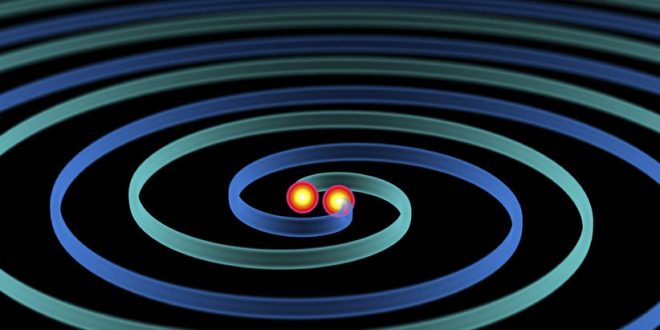Astronomers at the Laser Interferometer Gravitational-Wave Observatory (LIGO), based in the US, and the Virgo detector, in Italy, have successfully detected gravitational waves from space for the fourth time.
“Today marks an exciting milestone in the growing international scientific effort to unlock the extraordinary mysteries of our universe,” France Córdova, director of the National Science Foundation, which funded LIGO, said at the meeting.
“This really makes clear the value of having more detectors,” says David Blair of the University of Western Australia, who is involved in the LIGO collaboration.
This event – the merger of two black holes, about 1.8 billion light-years away, with masses about 31 and 25 times that of the Sun – is only the fourth confirmed black-hole merger ever observed. The first was observed in September 2015. It is also the first spotted by the recently upgraded Virgo, which came online in April this year.
The signal was observed first at the LIGO detector in Louisiana, then about 8 milliseconds later at LIGO’s Washington detector, and after another 6 milliseconds it reached Virgo near Pisa, in Italy.
Each detector uses a pair of long laser beams at right angles to each other to measure tiny fluctuations – less than a thousandth the width of an atom – in the length of the beam caused by gravitational waves.
Astronomers use the time delays and the phase of the received signals, combined with their knowledge of the position and orientation of the detectors, to triangulate the direction from which the signals came.
The three earlier black hole mergers were observed only by the two US-based LIGO detectors. Two detectors let you narrow the source down to a two-dimensional plane; the addition of a third introduces an extra data point that shrinks the stripe down to a blob.
In this case the blob is still about 300 times the size of the Moon, but that’s a small-enough area to cover with a conventional telescope.
Optical, X-ray and radio telescopes have been turned to look at the area where the signal came from. They saw nothing. This was not unexpected, since colliding black holes are still actually “black”. While their collision creates gravitational waves, there is no visible radiation. So why bother with the telescopes?
Well, other events that reverberate with gravitational waves – such as colliding neutron stars – are predicted to produce large amounts of electromagnetic radiation. Indeed, the astronomy world was set abuzz in late August by rumours that just such an event had been spotted, though no confirmation has yet been forthcoming.
Greater precision in locating the sources of gravitational waves will depend on upgrades to existing detectors – LIGO and Virgo are both shutting down to get ready for another joint round of observations next year – but, more significantly, on building new detectors in other places.
“It’s very important to have that long baseline,” says Blair, meaning the distance between the detectors. Adding a detector in Western Australia – a proposal Blair has advocated for many years – would bring the longest baseline from 8,000 km up to 12,000 km. “It would be particularly good to have a long baseline to the southern hemisphere,” he adds, because this would extend the network further into the third dimension.
Agencies/Canadajournal
 Canada Journal – News of the World Articles and videos to bring you the biggest Canadian news stories from across the country every day
Canada Journal – News of the World Articles and videos to bring you the biggest Canadian news stories from across the country every day



